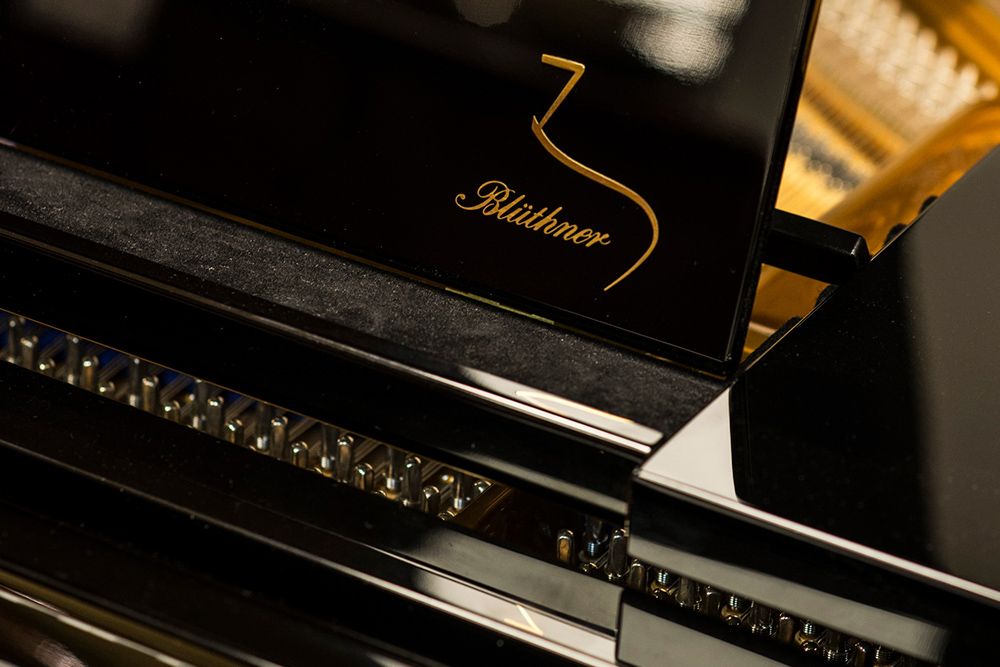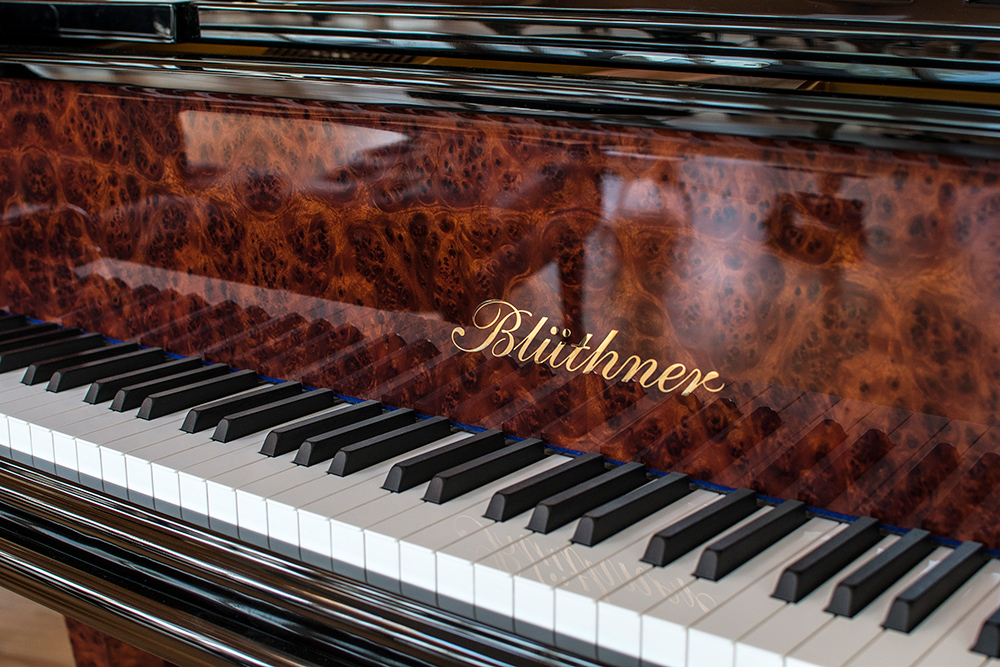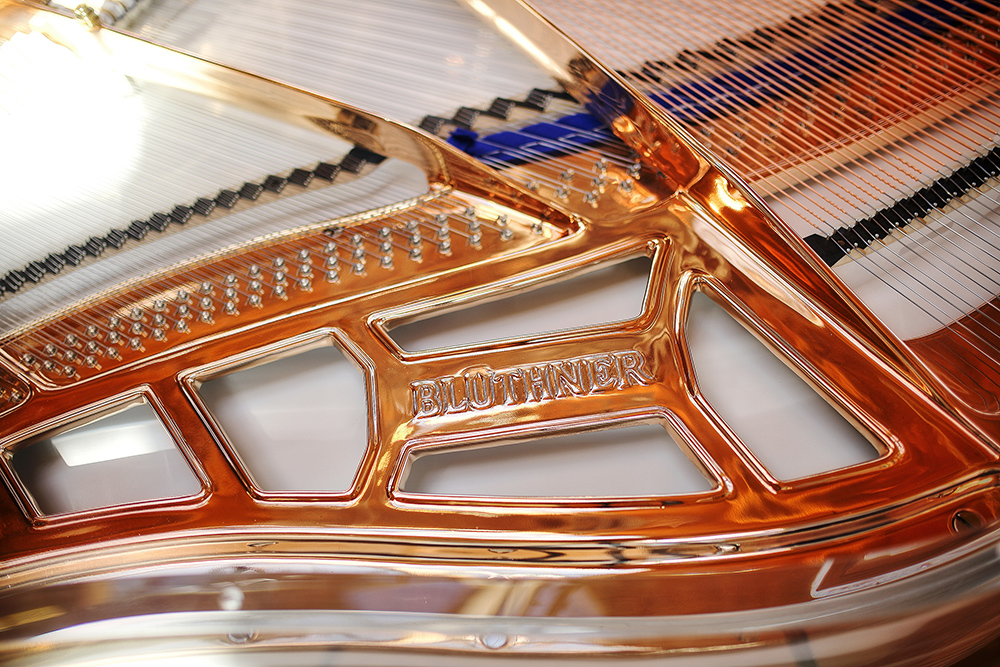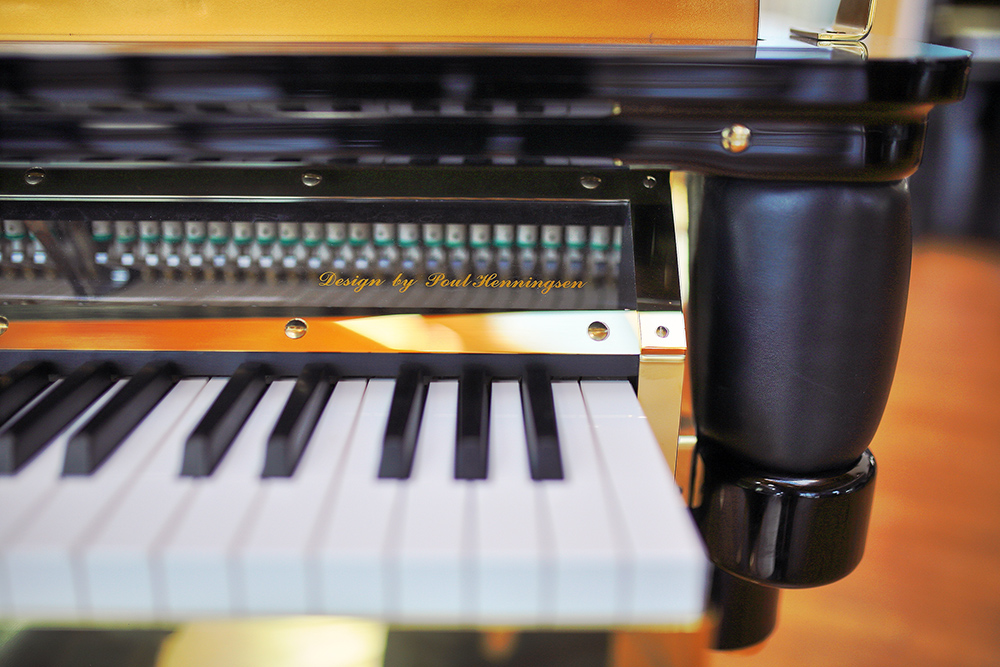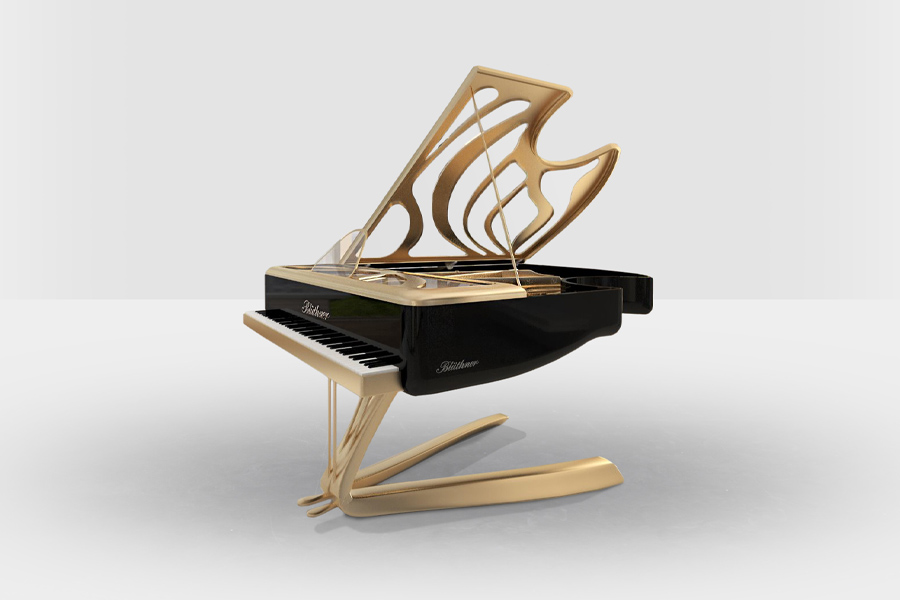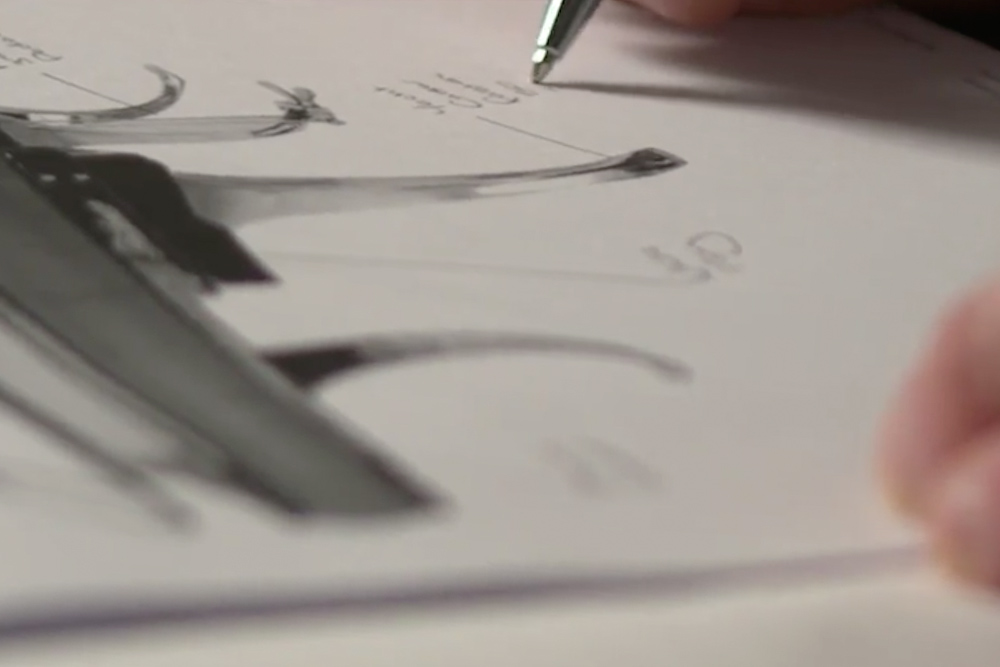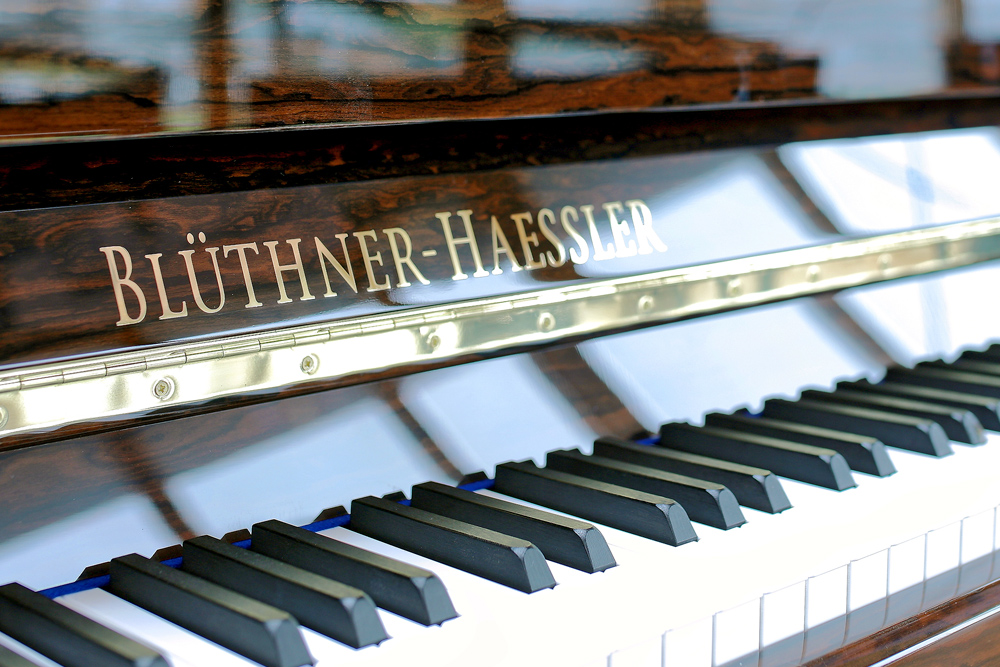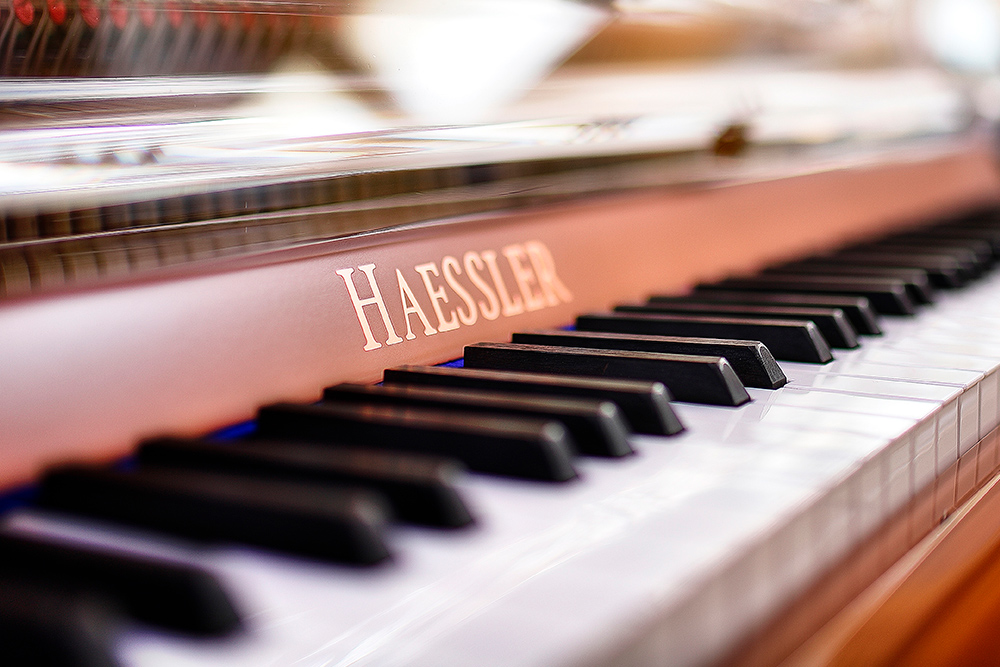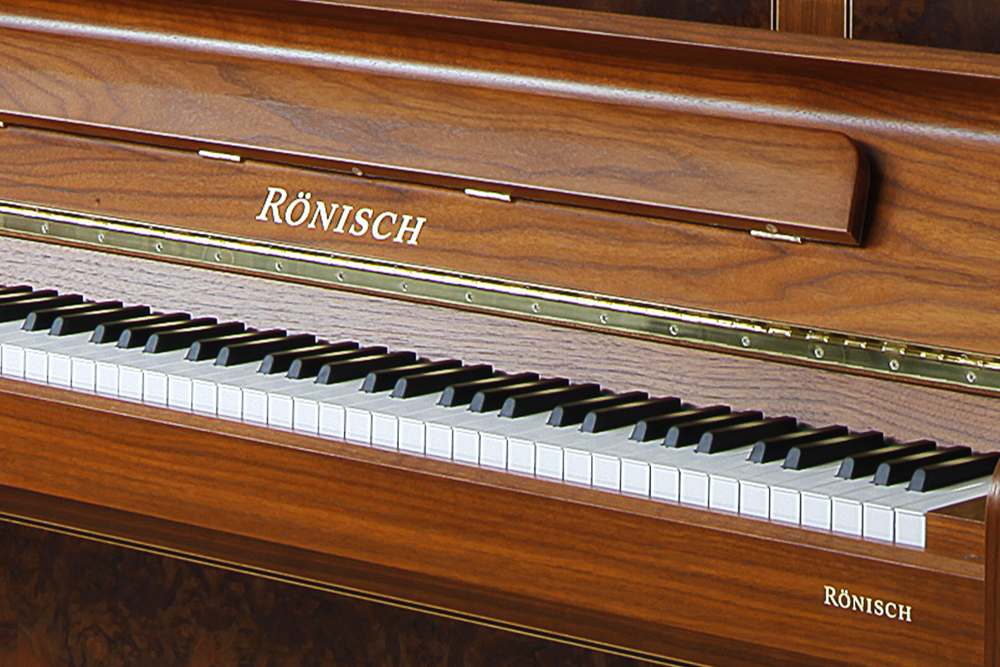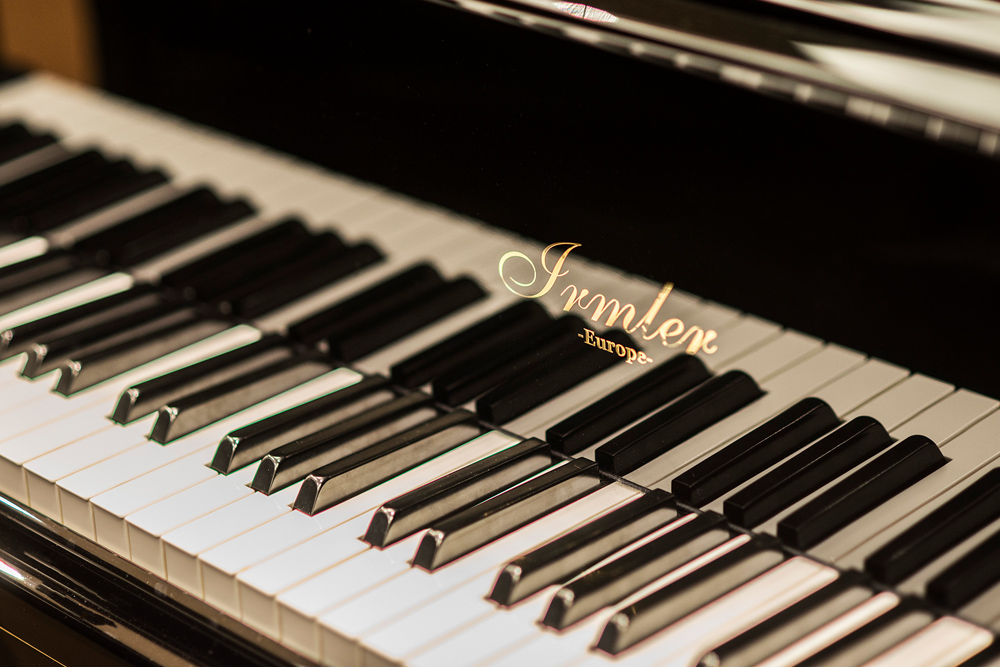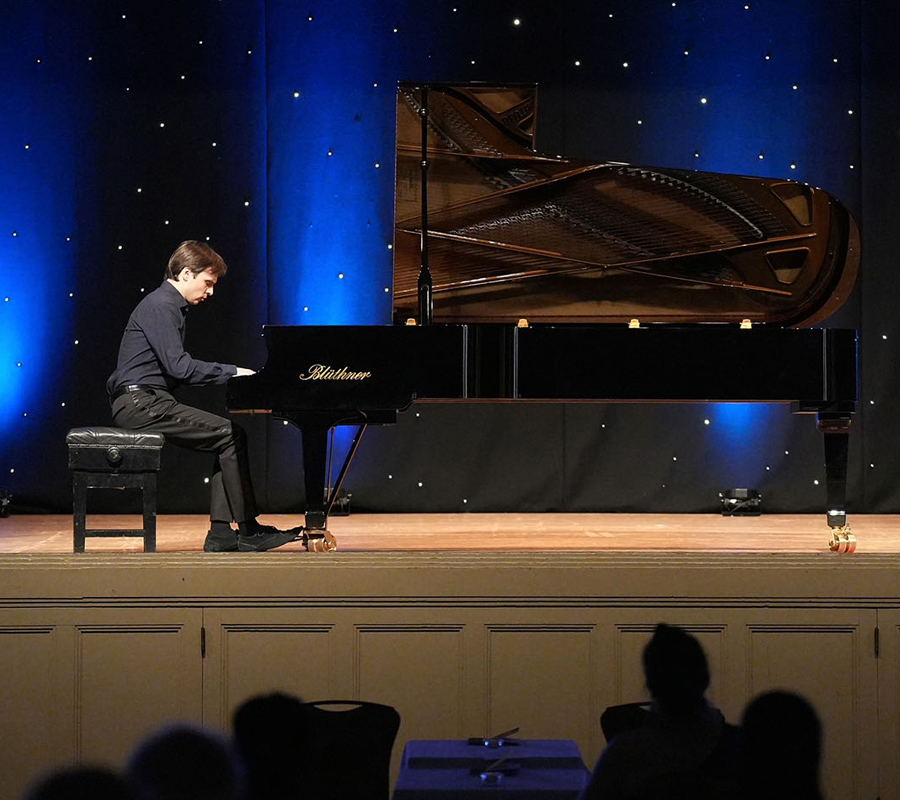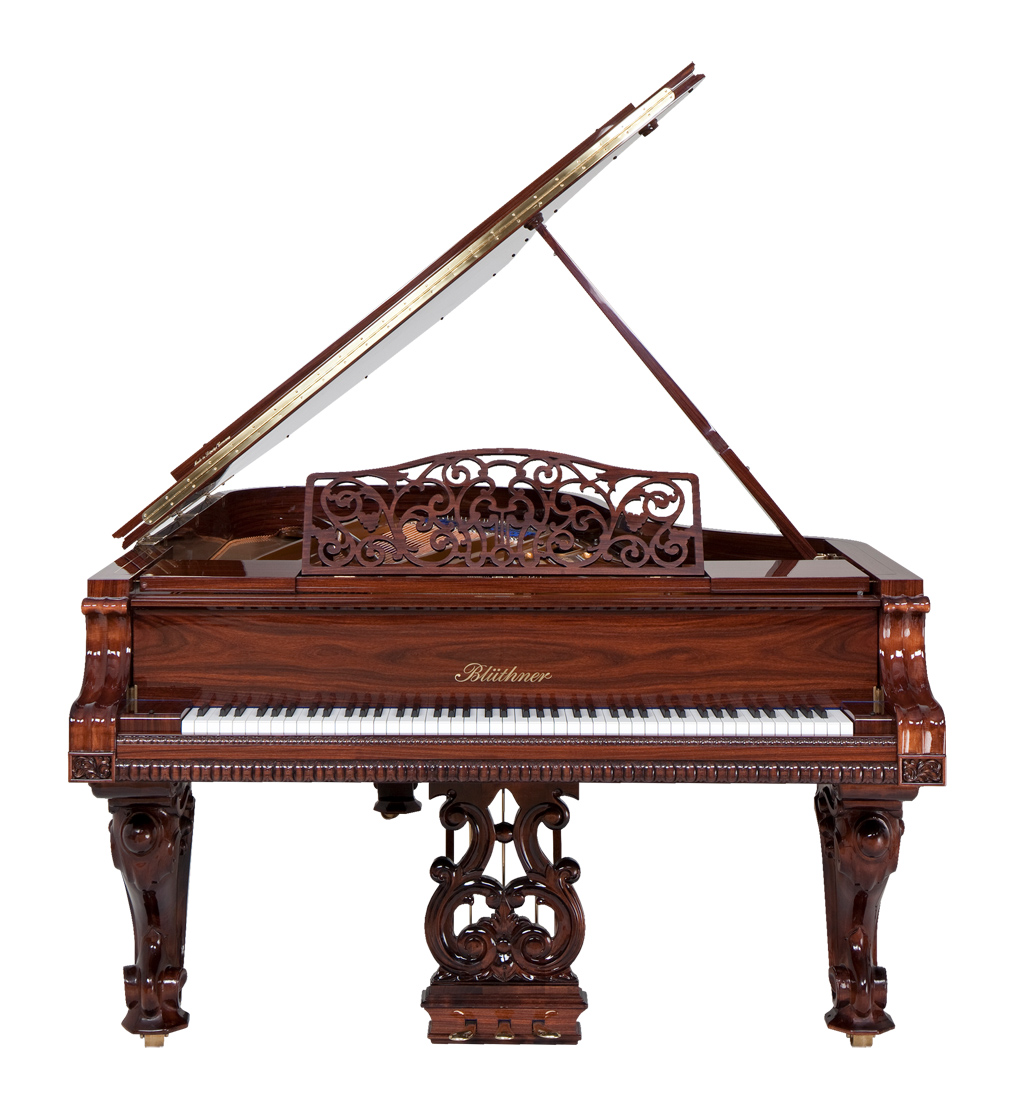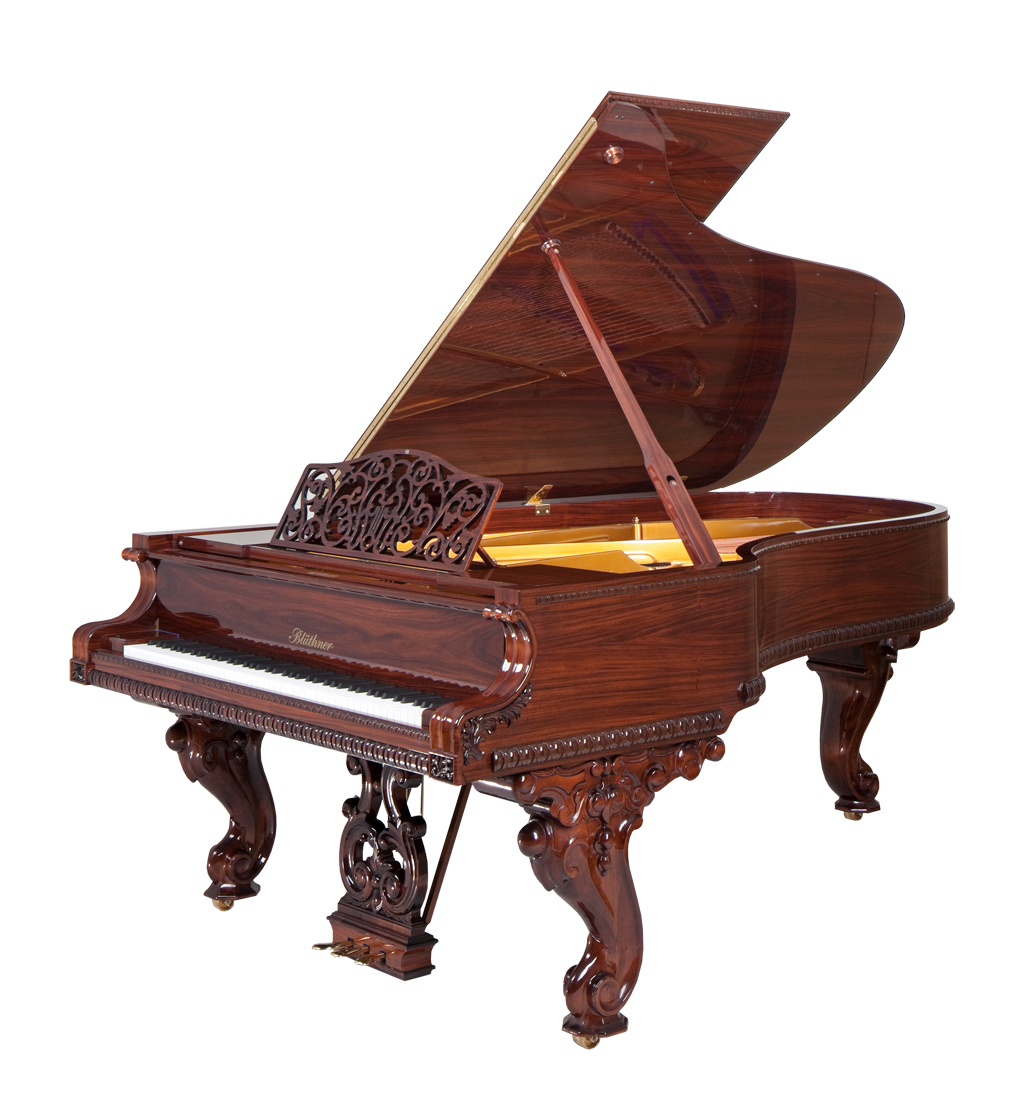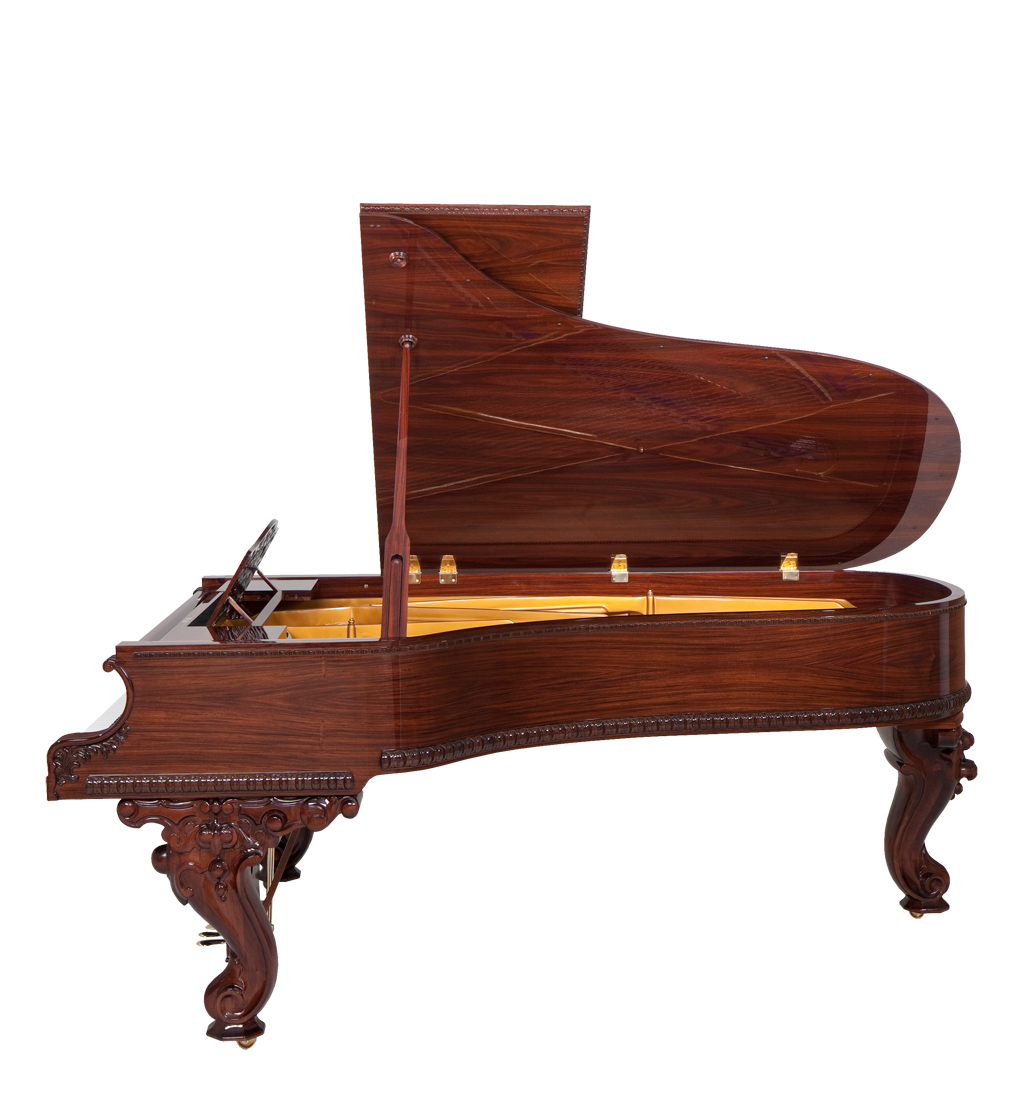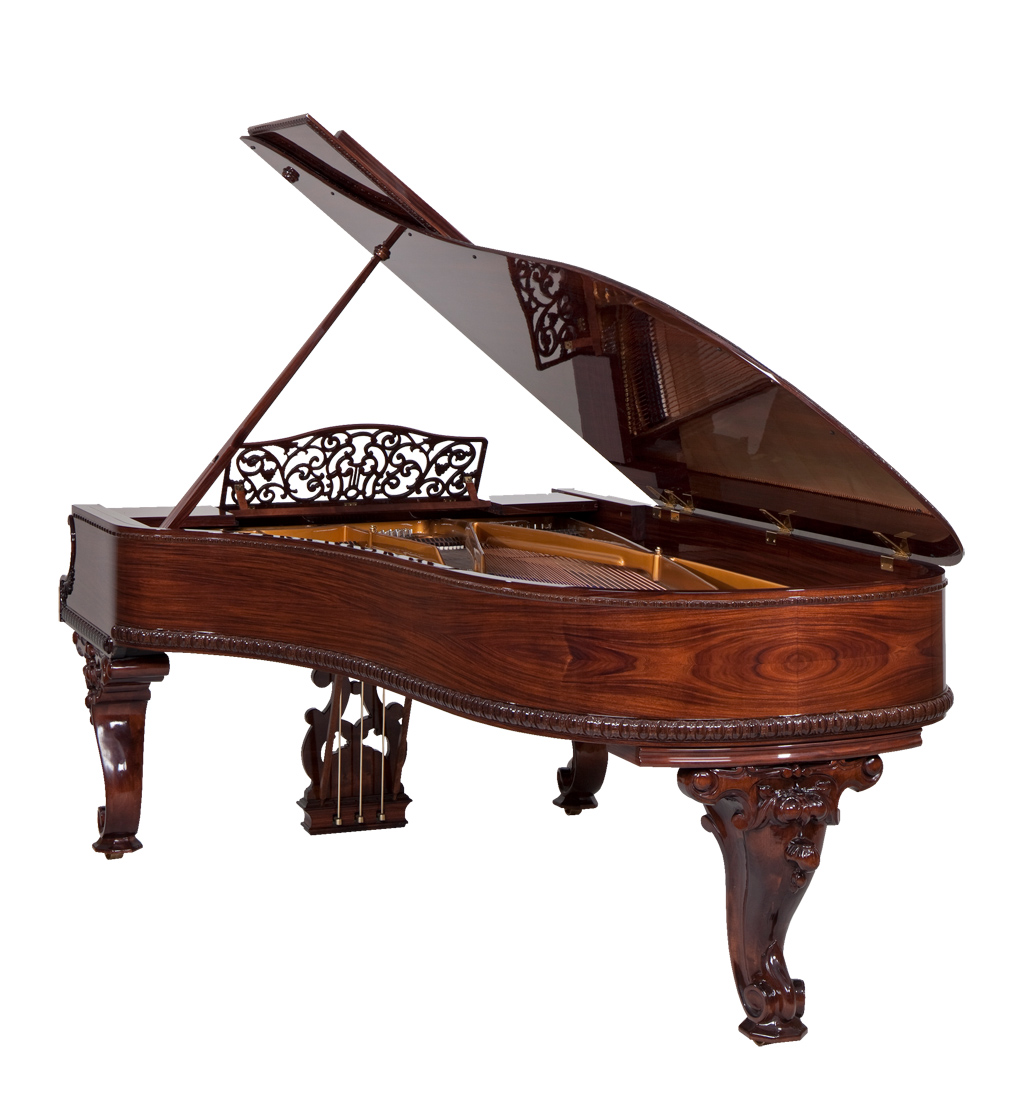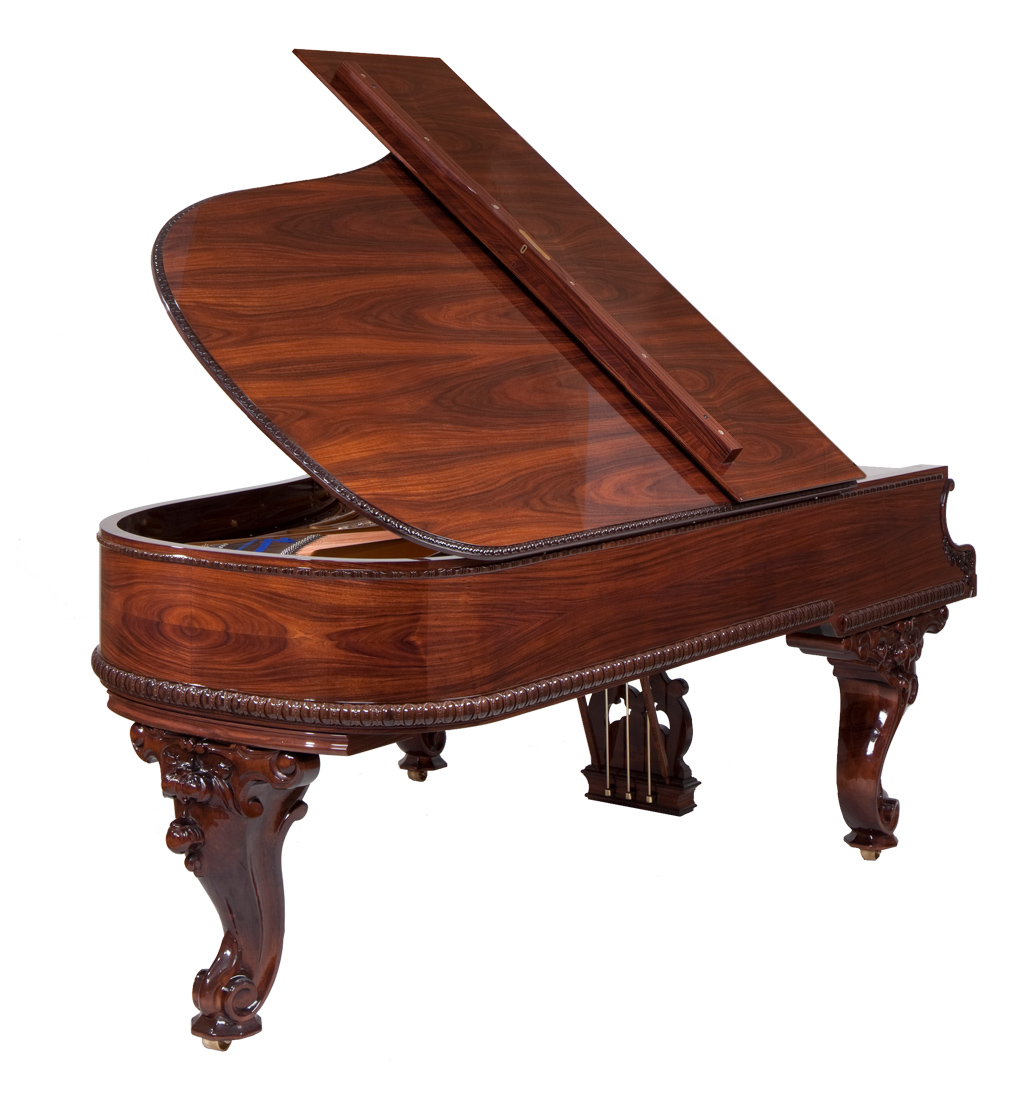Queen Victoria
Suprême Edition Grand Piano
During the Victorian Age of the 19th century, Blüthner was the purveyor to the Royal Court of Queen Victoria. The English Society in this time adored the style of the Neo-Renaissance, which expressed the wealth and the feeling of belonging to the most important nation in the world in a most convincing way. Queen Victoria and her princely husband Albert defined that period which was later named after them.
Key Features
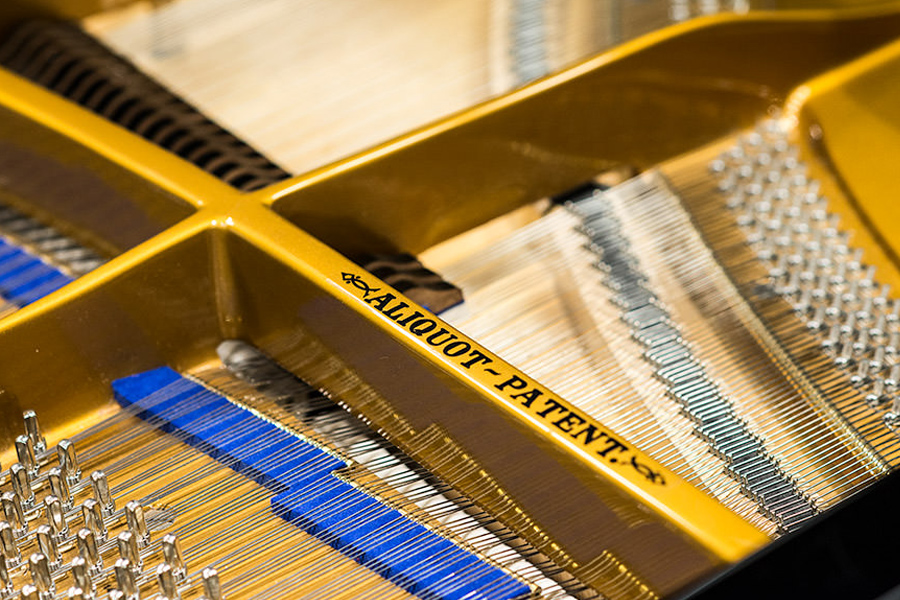
Aliquot Patent
All Blüthner grand pianos (with the exception of the Model 11) are equipped with the Blüthner Aliquot patent. In the highest treble section of our grand pianos, each note is assigned a fourth string, which is slightly raised from the others and not struck by the hammerheads. The aliquot string resonates in unison with the note played, thereby amplifying it and creating a rich, warm and colourful sound. The system was developed by Julius Blüthner over a century and a half ago and is considered a key facet of the Blüthner Golden Tone.
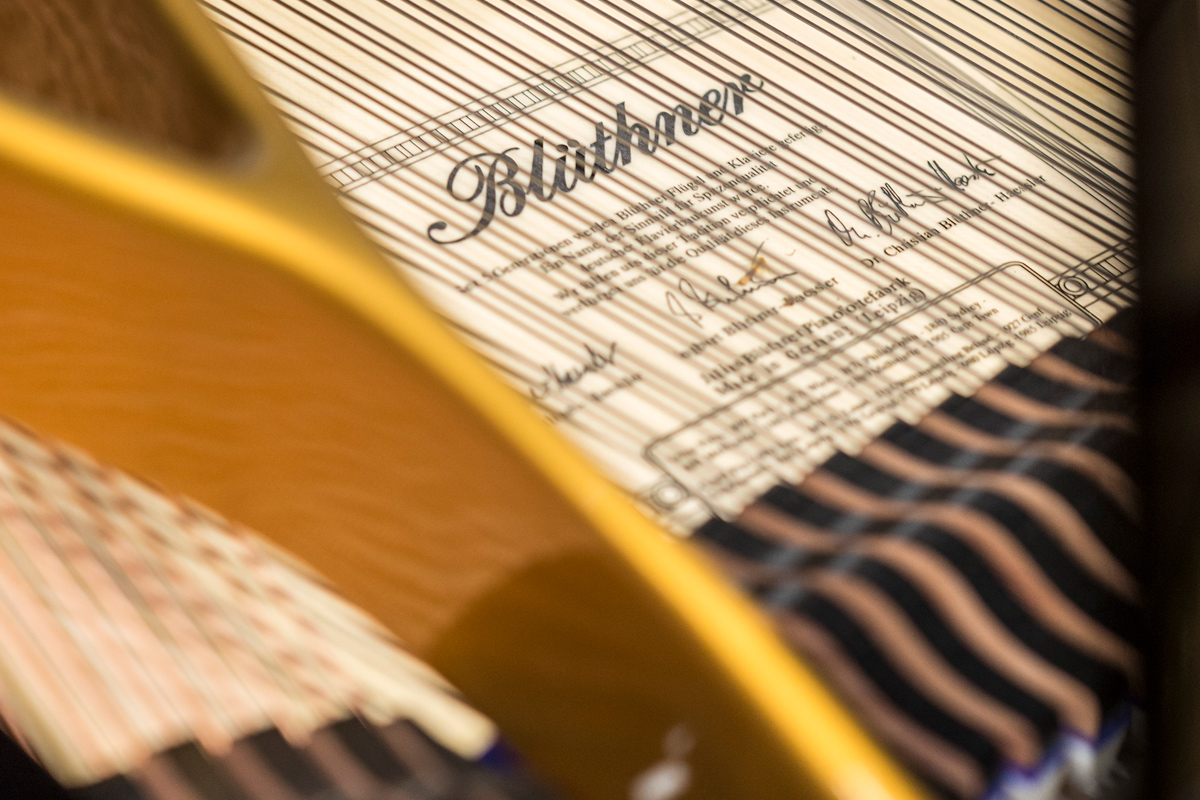
Soundboard
Only the finest white high mountain spruce from selected alpine stock is used for the production of Blüthner soundboards. The shape of a Blüthner soundboard is unique — a cylindrical curve with a tension evenly matched to the strings. Before installation, it is seasoned for many years to ensure maximum resonance and durability. The rubs are shaped to fit the curvature required and therefore even under difficult climatic conditions, the tension of the soundboard remains intact over decades.
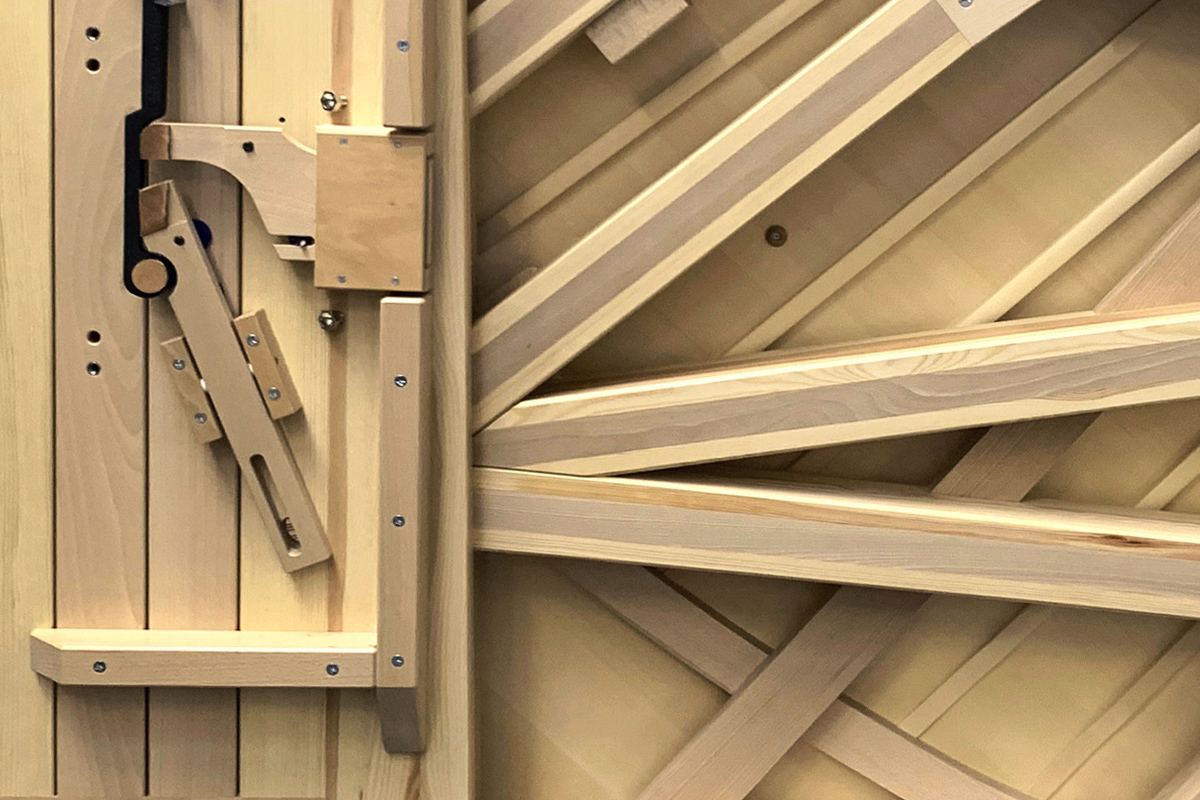
Inner Rim and Cross Beams
The inner rim construction, along with the cast iron frame, has to withstand enormous tension when an instrument is brought up to pitch. Blüthner cross beams are manufactured with a solid centre of red beech with German pine laminated to each side, making it virtually impossible to allow movement caused by humidity changes. It also ensures a permanent and solid fit for the bolts of the iron frame.
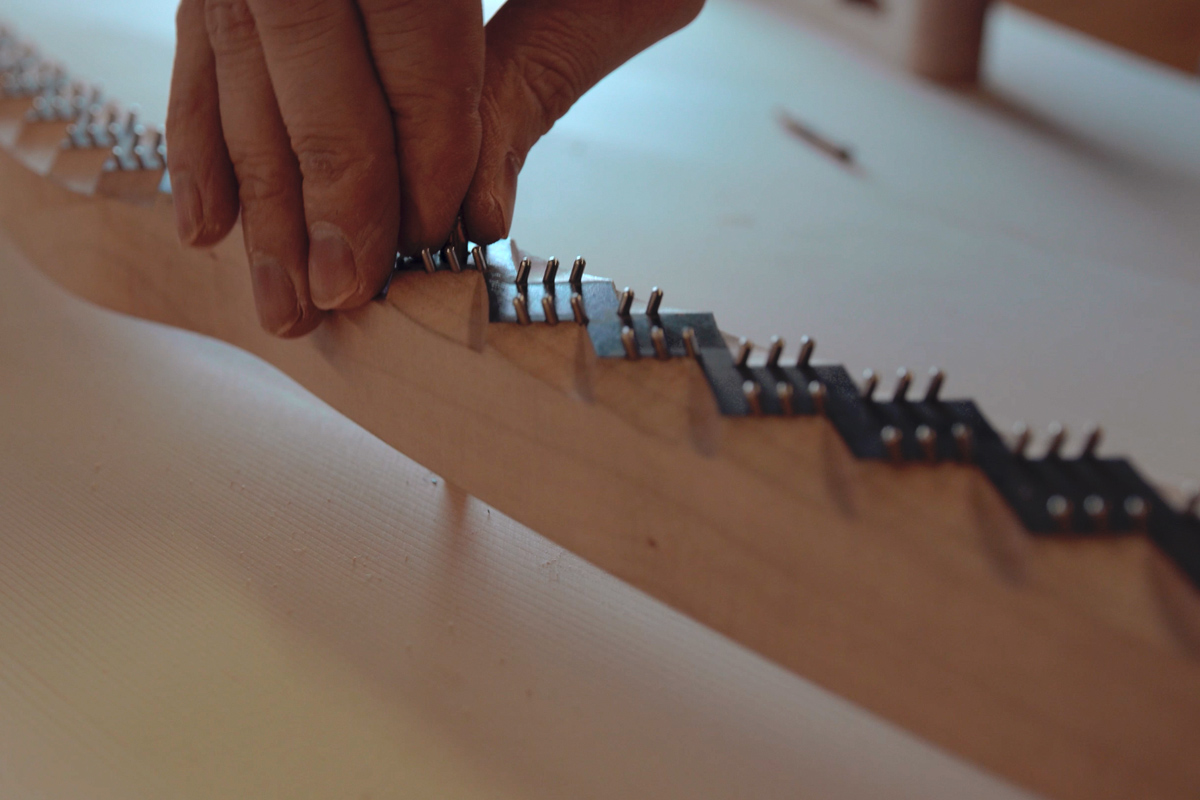
Bridge and Pin Block
The bridge is adapted to the tension and curvature of the soundboard in its optimal position, ensuring that the full spectrum of the string vibrations is transferred to the soundboard. Both the bass and treble bridges are constructed from European maple wood. The pin block or wrest plank is made from 14 highly compressed hardwood layers, cross-banded and glued at 90 degrees to the direction of the wood grain, securing the tuning pins on all sides for long-lasting tuning stability.
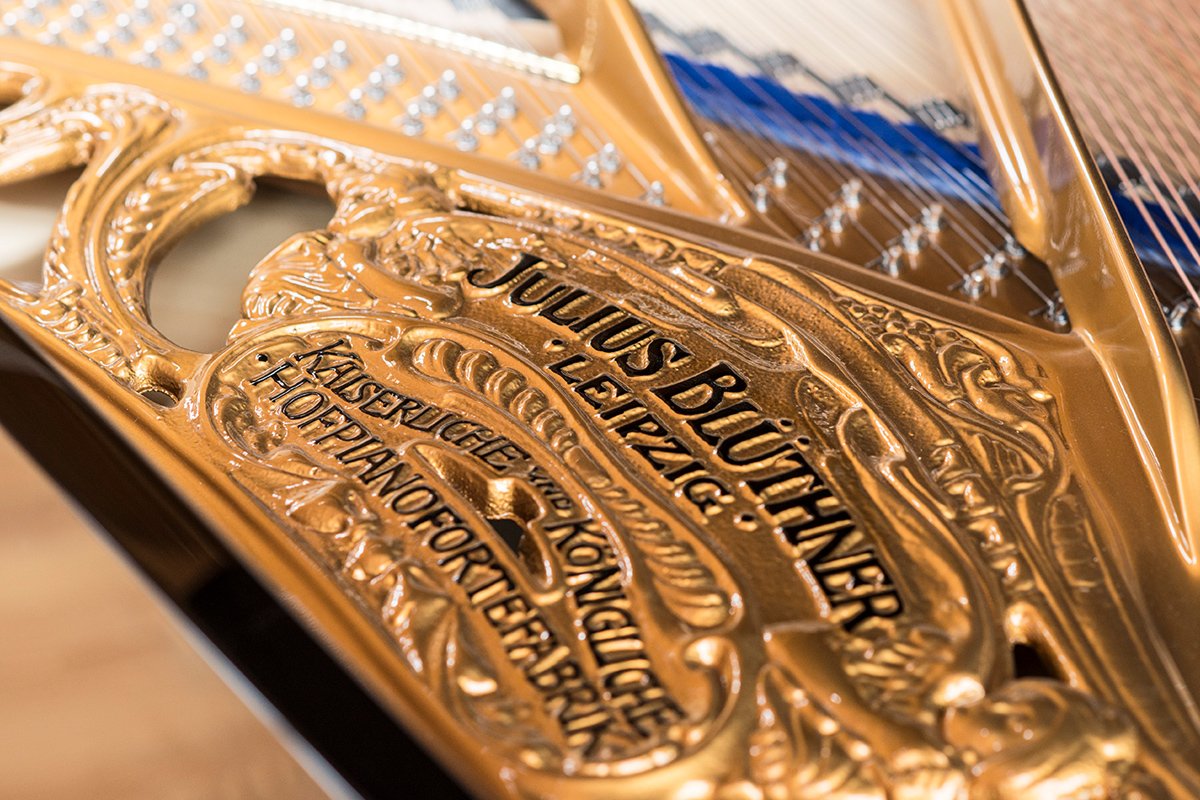
Iron Frame
The iron frame is cast in a quartz sand mould using traditional methods. To withstand the enormous tension of nearly twenty tonnes, the design of each frame is precisely calculated and manufactured.
Each frame is seasoned outside for two years before being sprayed to a high quality-finish and individually fitted to an instrument.
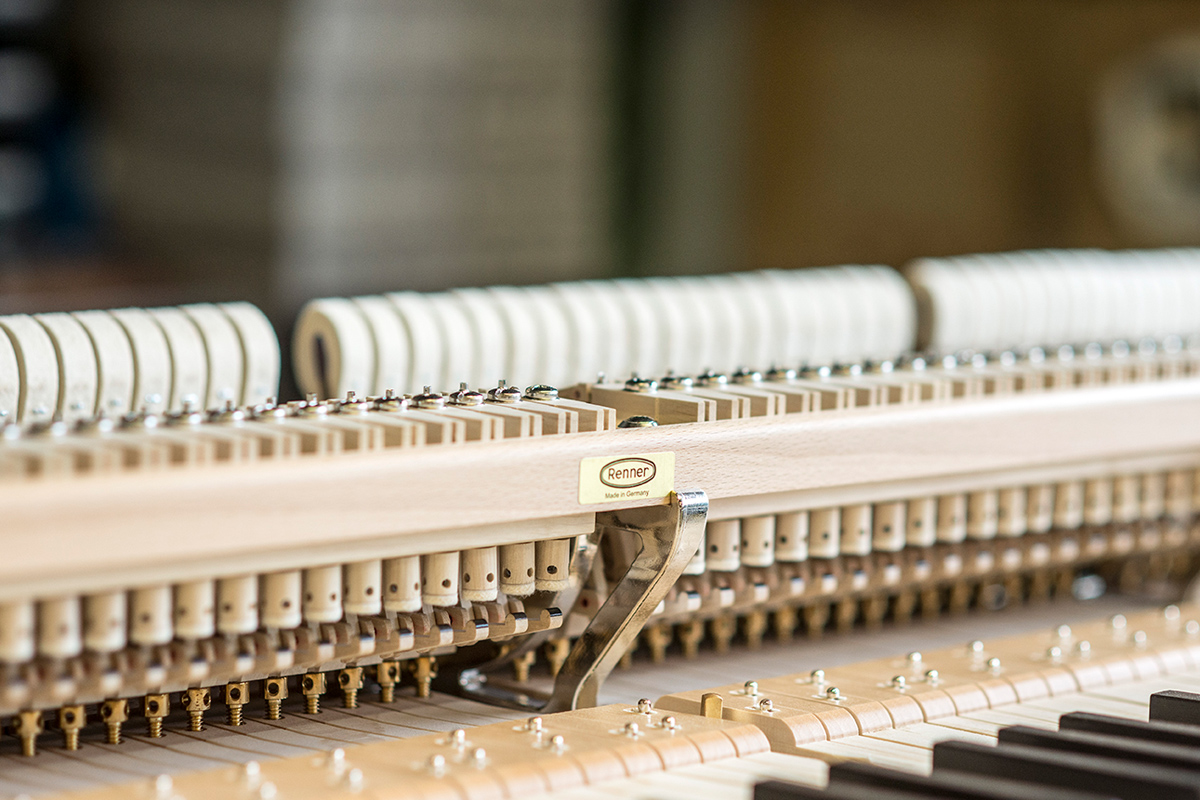
Keyboard and Action
The keyboard is the pianist's most important connection to the instrument, through which he expresses his ideas. The highest precision is an absolute must in order to enable the finest nuances, a consistent progression from the gentlest pianissimo to the most powerful fortissimo, as well as security and control. The weight and response must therefore be adjusted with the utmost precision.
The mechanism is mounted on a stable frame made of oak and the unique, interrupted construction of the key bed absorbs the naturally occurring striking noises of the action, which consists of over 3000 individual parts enabling undisturbed playing and listening pleasure.
Dimensions & Specifications
| Model | Length | Width |
| Model 4 | 2.10m / 6'10" | 1.54m / 5'1" |
| Model 2 | 2.38m / 7'8" | 1.54m / 5'1" |
| Model 1 | 2.80m / 9'2" | 1.60m / 6'3" |
